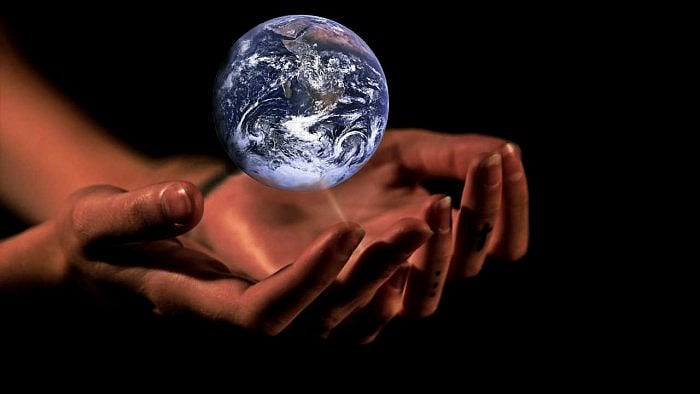
As the adverse effects of the climate crisis become increasingly imminent, the call for equity in all spheres of life needs to be equated with the call for climate change education (CCE). It is imperative for the educational curriculum to incorporate climate education as an integral element of every discipline, from STEM courses to literature and the arts. The significance of a curriculum inclusive of climate education lies in its interdisciplinary potential to build students who can initiate cross-sectoral climate action. However, school curricula in India currently lack this focus on interdisciplinary climate studies.
The One UN Climate Change Learning Partnership Resource Guide mentions that “the complexities of climate change require it to be addressed using a holistic approach that draws upon a range of disciplines and areas of expertise, including climate science, policy, law, ethics, sociology, economics, and culture, with the aim of an effective and inclusive knowledge sharing approach.” Furthermore, it specifies that “CCE promotes learning about the causes and effects of climate change as well as possible responses, providing a cross-curricular and multidisciplinary perspective.”
The integration of various disciplines with climate studies is of fundamental importance as it reshapes socio-economic structures to be more equitable. Students equipped with climate education can grow to be innovators and policymakers who drive change for educational and economic equity through climate action. The multidisciplinary nature of environmental studies inevitably signifies that climate education can be achieved at the school level, as climate studies can be included in the curriculum of sciences, social science, literature, and the arts.
To provide examples of the integration of CCE with other disciplines such as Economics and literature, it is essential to understand the contribution of CCE towards humanising these fields. For instance, economic growth has often been posited as a force that runs contrary to climate activism. However, an education in Economics that integrates CCE will demonstrate that climate action is essential for economic prosperity.
A 2015 study by Marshall Burke, Solomon Hsiang, and Edward Miguel states that “unmitigated warming is expected to reshape the global economy by reducing average global incomes by roughly 23% by 2100 and widening global income inequality, relative to scenarios without climate change.” Further, a study by Katherine Ricke et al. (2018) indicated that India alone would bear almost a quarter of the economic costs inflicted globally by climate change.
Economic growth and climate action can be in harmony, as Naomi Klein, Professor of Climate Justice at the University of British Columbia, points out: “If industrial policy were brought in line with climate science, the supply of energy through wind, solar, and other forms of renewable energy would generate a huge number of jobs in every country—in manufacturing, construction, installation, maintenance, and operation”.
Similarly, including stories and creative arts in school curricula that express the narratives around climate change and climate action can broaden children’s ability to conceptualise literature and films on climate change. Children can grow up to be imaginative storytellers, filmmakers, and artists who can capture the essence, nuances, and complexities of the entire discourse on climate change.
Amitav Ghosh points out the lack of representation of climate change in contemporary literary fiction and that “the climate crisis is also a crisis of culture, and thus of the imagination.” To bridge this gap in imagination, it is crucial that the literature and arts curriculum at the school level integrate the creative and cultural expression of the climate crisis and climate action in the prescribed stories and poems.
Educational equity is best supported by climate equity, as the detrimental consequences of climate change on vulnerable children and adolescents are multipronged. Various studies show that hotter climates lead to an unfavourable learning atmosphere and reduced performance in exams. As per a 2019 UNICEF report, case studies on the countries of the East Asia-Pacific region demonstrate that climate disasters such as floods, droughts, heatwaves, and air pollution lead to absenteeism and lower enrolment rates through their negative impact on health and livelihoods.
An interdisciplinary approach to climate education provides scope for cross-sectoral collaboration amongst stakeholders to create and implement a climate action plan that mitigates its multidimensional impact on health, livelihoods, education, and other domains of human life.
(The writer is a Delhi-based author)